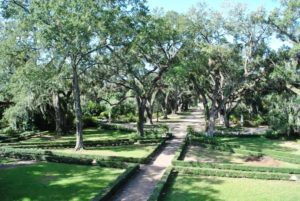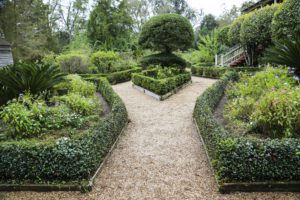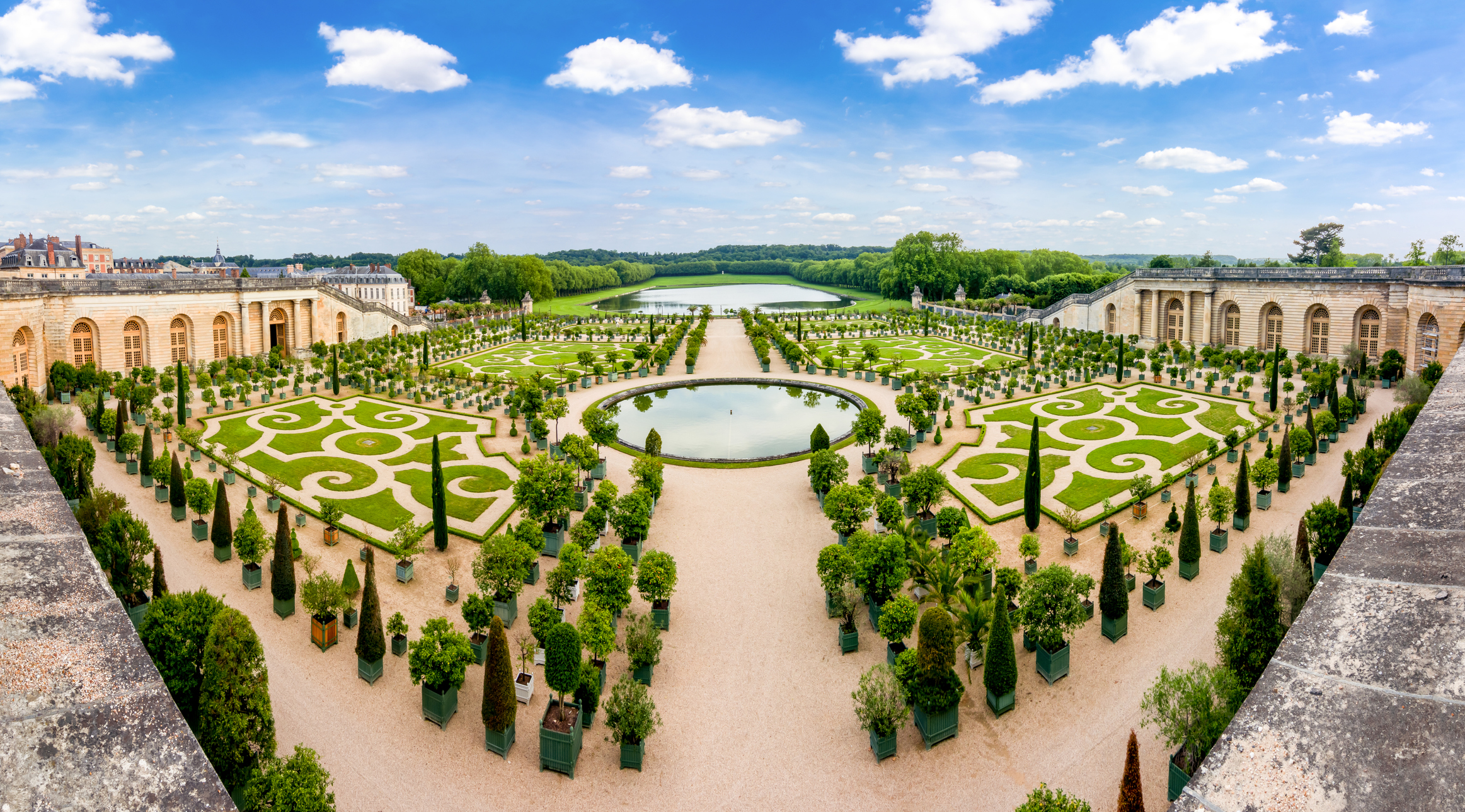Square away what you think you know about the parterre garden style inspired by 15th-century France
As seen in the iconic Gardens of Versailles, a parterre is a formal garden that was popularized in 15th-century France and spread throughout Europe, eventually reaching the New World. Well manicured and highly ornate, parterres are the pinnacle of grandeur, and while we may not be able to journey across the pond to observe the original French gardens at the drop of a spade, we were able to learn about the history and design principles of parterre gardening from Anna Timmerman, an LSU AgCenter extension agent serving the greater New Orleans parishes, through part of the virtual “Lunch and Learn” Reflections in the Garden series presented by the Friends of LSU AgCenter Botanic Gardens.
First, in order to appreciate parterres, we look into what they really are. According to Timmerman, parterre gardening is “a style of gardening that relies heavily on elements of design.” This includes line, shape, space and so on–the same elements of design used in other art forms like painting or sculpture.
Parterre gardens are highly controlled and regulated. It’s certainly not something that was taken as a DIY home project. The gardens were commissioned by the wealthy who would hire a designer to carefully sketch and implement the design.

“If you think back to the time in French history where it was still a feudal system, many of the upper classes had a family crest and they would often pull elements of that crest into the garden such as knots, monograms and initials,” says Timmerman.
With minimal use of colorful flowers, hedges and borders are the meat and potatoes of parterre gardening. The hedges give way to outdoor rooms and compartments, which can be used for entertaining or secret meeting spaces.
Another key aspect of parterres is the visual interest: there is always a focal point. Whether it be the chateau, a fountain, a river, city or town, the parterre always leads the eye to some point.
“I like to think of them as a Persian rug in front of a fireplace or a nice carpet leading to the front door,” Timmerman notes. “There’s always something that is going to lead the eye where it needs to go”
After all, the point of the parterre is to show off. In the past, they were a setting for the extravagant lifestyle of the certain class of people that could afford this style, but parterres can also be interpreted in contemporary worlds, and even your own garden.
“You can employ some of these elements of design in your home garden simply by thinking about edges and borders, mixing loose things with more rigid things. It really is something that translates into today’s gardening world,” says Timmerman.
No two gardens are ever the same, with the elements and style of each garden depending on the owner’s individual taste or the designer’s hand and how he preferred to do things. But the inspiration behind the parterre as a concept goes much further back than these French designers.

“The parterre comes from a design perspective borrowed from a lot of Roman villa gardens built before the fall of the Roman Empire,” explains Timmerman. “French designers would do what was called a ‘grand tour.’ They would travel to Greece and Italy collecting statues and getting inspiration from Roman villa gardens.”
Parterre gardens in France evolved with Claude Mollet, who took a more formal approach to gardening and moved all herbs to the kitchen garden. André Le Nôtre, named the father of the parterre movement, later eliminated tall hedges and walls and took the time to sit down and write about gardening.
“Parterre gardening becomes popular with the planter and middle class through André Le Nôtre’s books,” says Timmerman. “It trickles down to what we think of as the middle class nowadays, and also makes its way to the New World colonies, including New Orleans, with the wealthy settlers traveling down to build their plantations or big estates in the area.”
When the settlers first arrived here, their gardening perspective veered toward utilitarian. Then, similar to what happened in France, families became more established and the herbs and vegetables were banished to the kitchen garden. As a result, more formal styles emerged in front of the home. At the time in the the southern U.S., boxwoods were not yet able to be imported, so gardeners used native species of hardwoods, wildflowers and live oaks. Tropical and subtropical plants were also a little harder to shape and harder to keep pruned, leading to a simplification of parterres.
“Here in Louisiana, we are blessed that—because of the French connection and heritage in this area—we can actually see these parterre gardens either in a historical context or as a contemporary garden design.”
For those looking to see these gardens first-hand, Louisiana parterres can be viewed at the New Orleans Botanical Gardens, Rosedown Plantation, the Pitot House, the Beauregard-Keys House, Afton Villa and multiple sites on St. Charles Avenue. More details about upcoming Lunch and Learn talks can be found at burdengardens.com.
Follow @inRegister on Instagram for more design inspiration.












